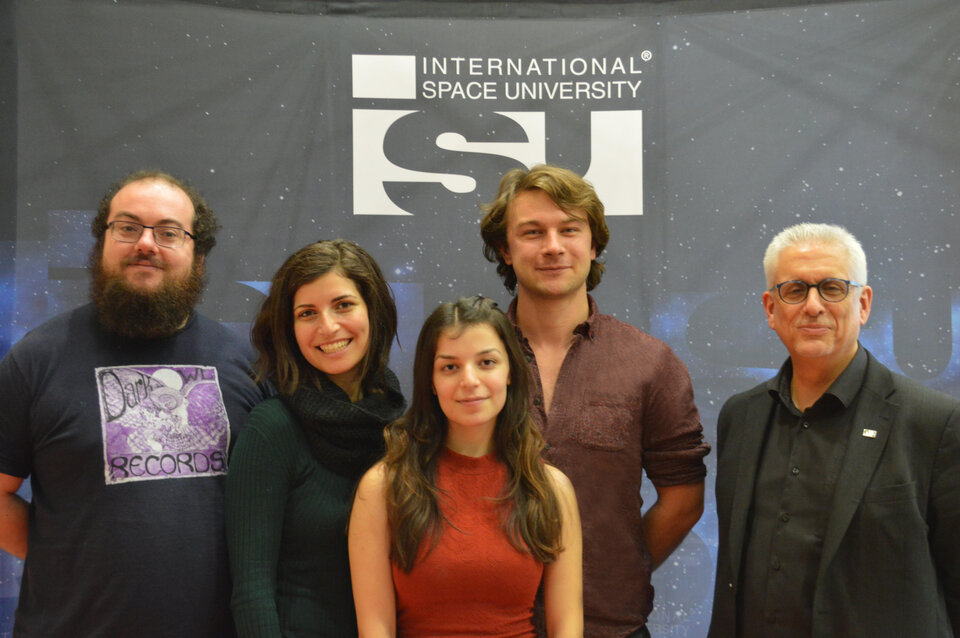Meet the teams: Team Bubbles
The Bubbles team consists of four Masters students at the International Space University in France. They will investigate a phenomenon known as single bubble sonoluminescence (SBSL) in a microgravity environment.
| University | International Space University, France |
| Endorsing professor | Prof. Chris Welsh |
| Team | Sara Khan, Orr Cohen, James Hurrell, Adam Nawal |

The aim of the experiment is to study SBSL in a larger parameter space, theorized to only be achievable in a microgravity environment. Limitations exist in the maximum size of and maximum pressure that can be forced onto the bubble due to various instabilities. Specifically, a study will be made of SBSL at a higher pressure outside of the normal conditions in which SBSL occurs.
SBSL is a flash of light generated by the collapse of a bubble of air suspended in a flask of liquid, ideally water. The bubble is trapped, grows, and collapses with the input of energy, by resonance, using sound. The bubble size then rebounds, stabilises, and repeats over microseconds. It is fantastically mysterious, with the source of this light still under debate. The current consensus is that the flash is a result of the high temperature and pressure achieved as a result of the collapse - several estimates place this above 10,000k and 1000atm at the bubble minimum radius. Zarm offers an ideal platform due to the timescales involved and the ability to control the ambient environment for a very sensitive experiment.
An extensive theoretical and experimental study has been done on the topic of SBSL but very little with regards to study in a microgravity environment. From a previous preliminary study, it is expected that the intensity of light emission will increase, compared with a 1g environment. This is understood to be due to the increased stability of the bubble as a result of a decrease in bubble shape instabilities. These bubble shape instabilities are driven by buoyancy, which is a consequence of gravity. If successful this would offer a new area to explore the phenomena and perhaps reveal the unexpected.



